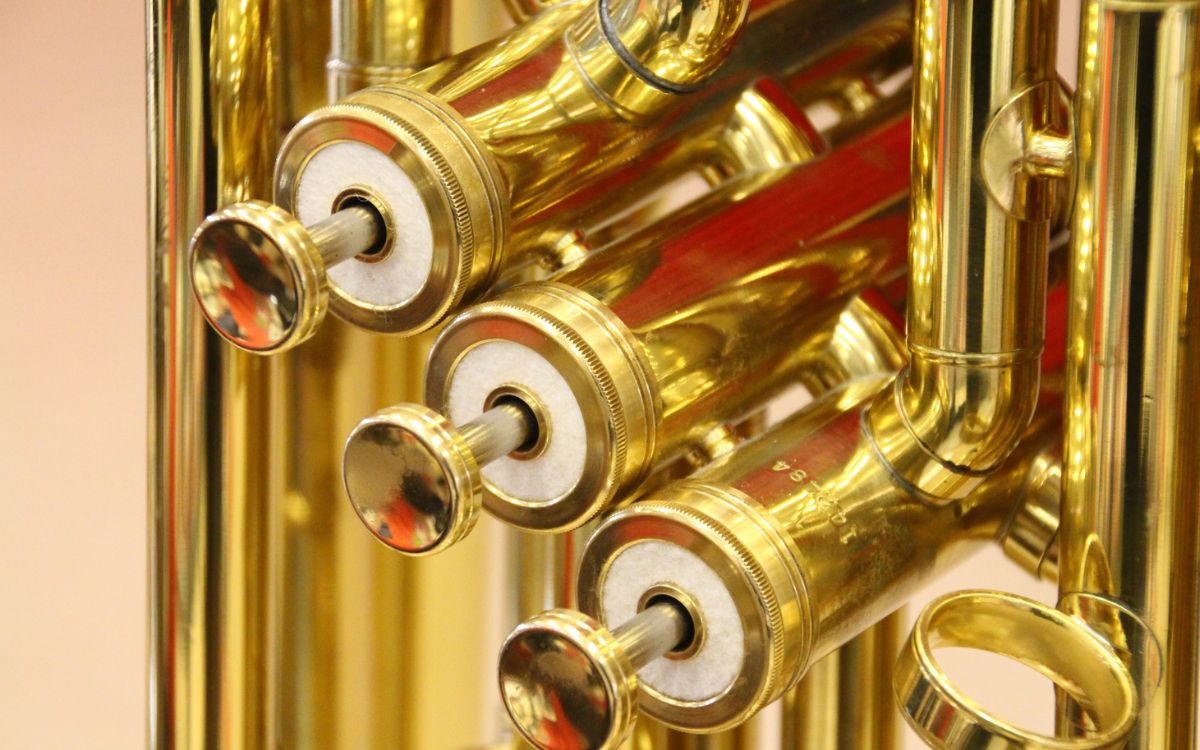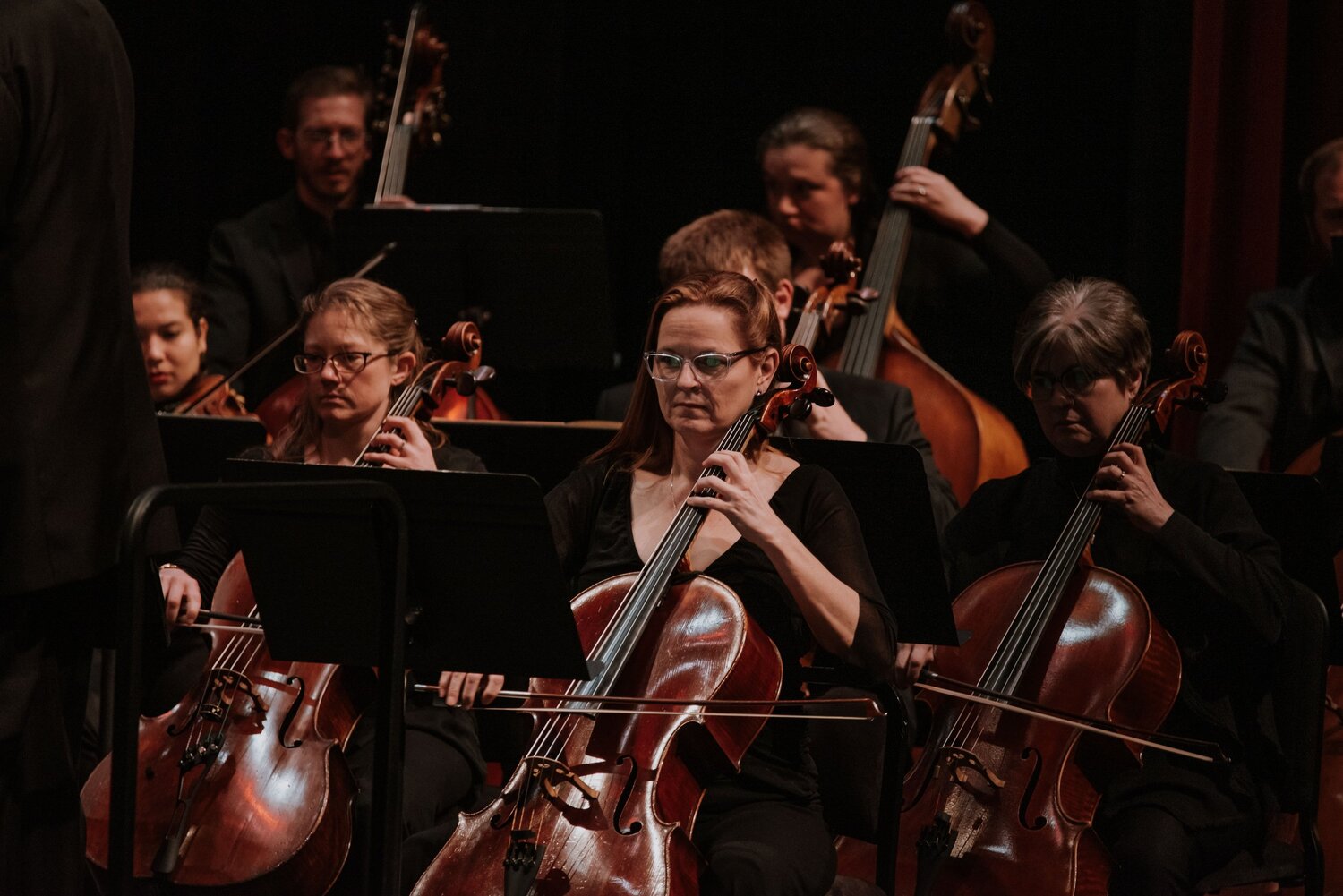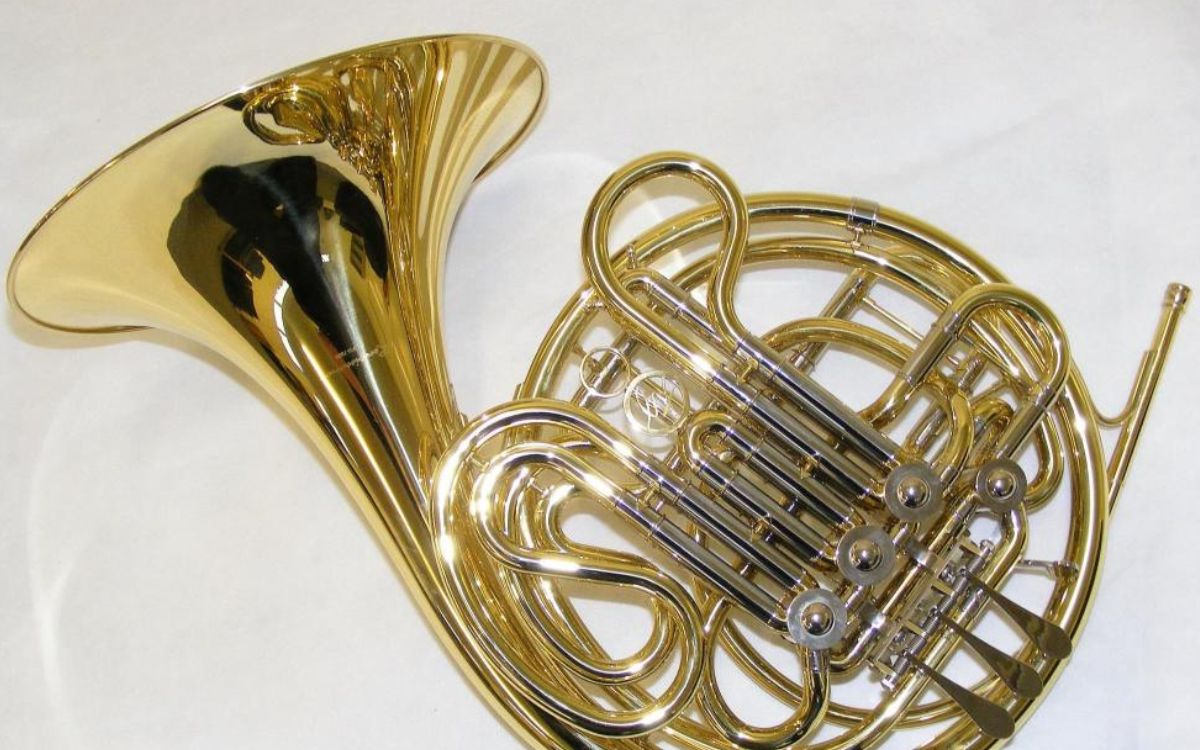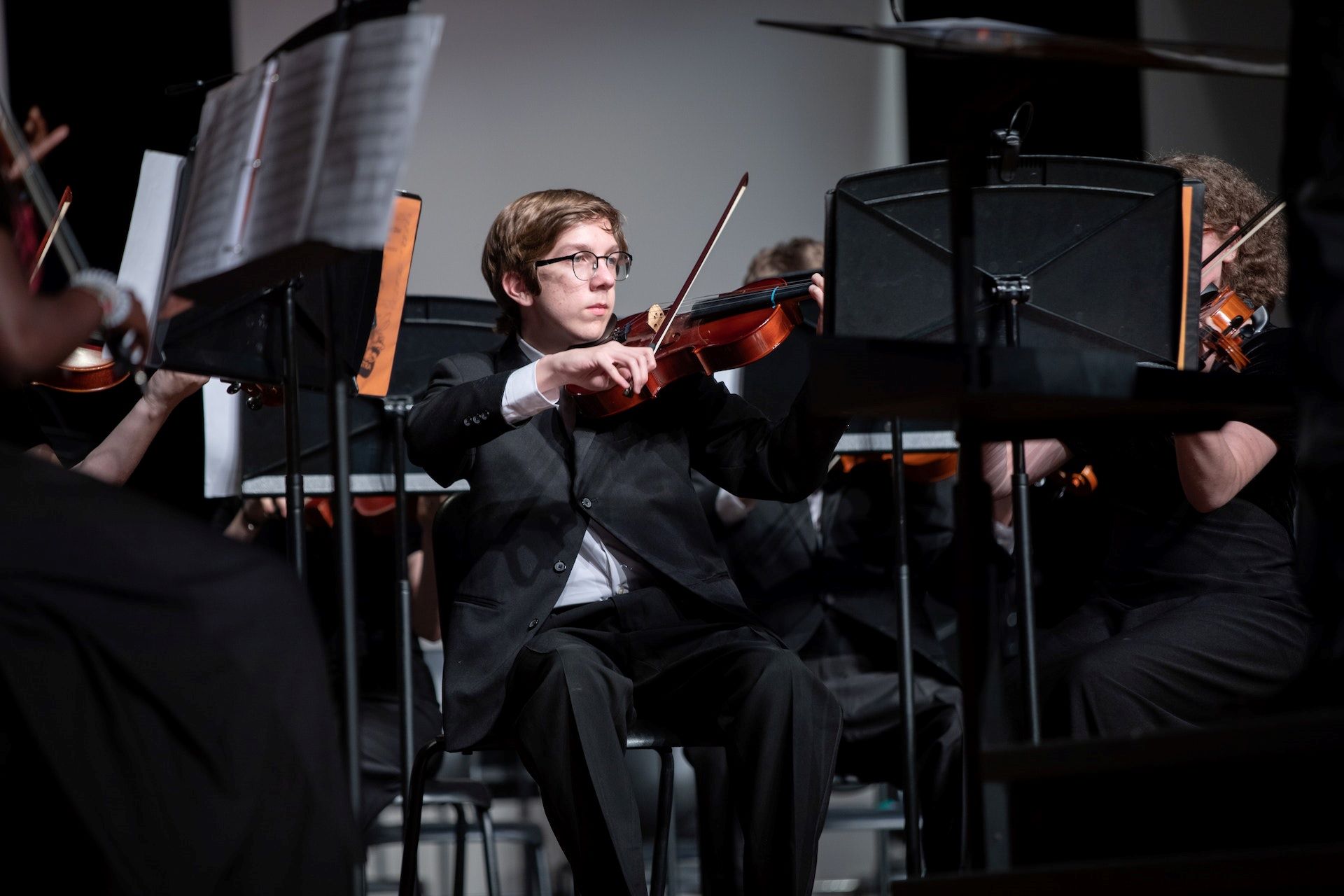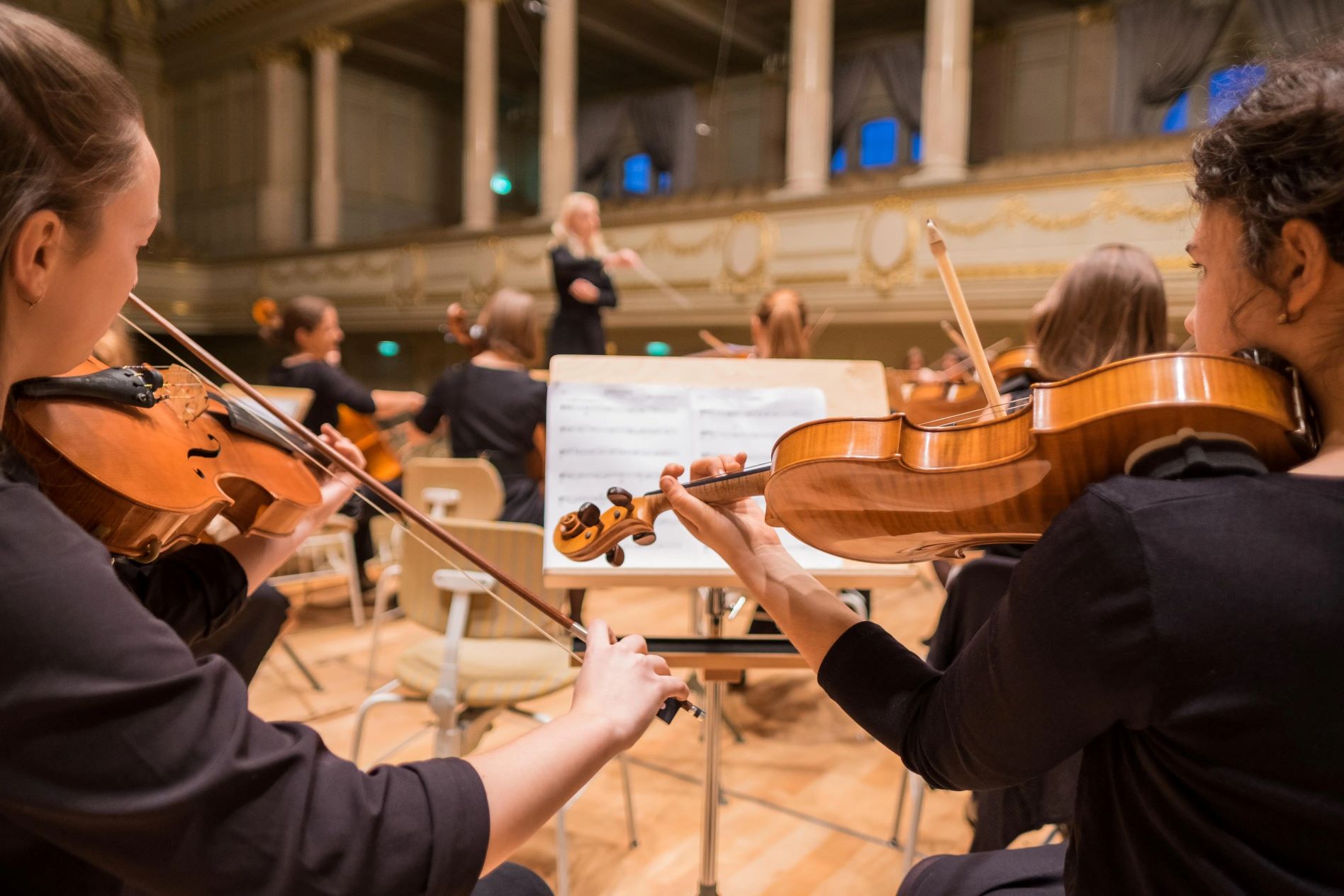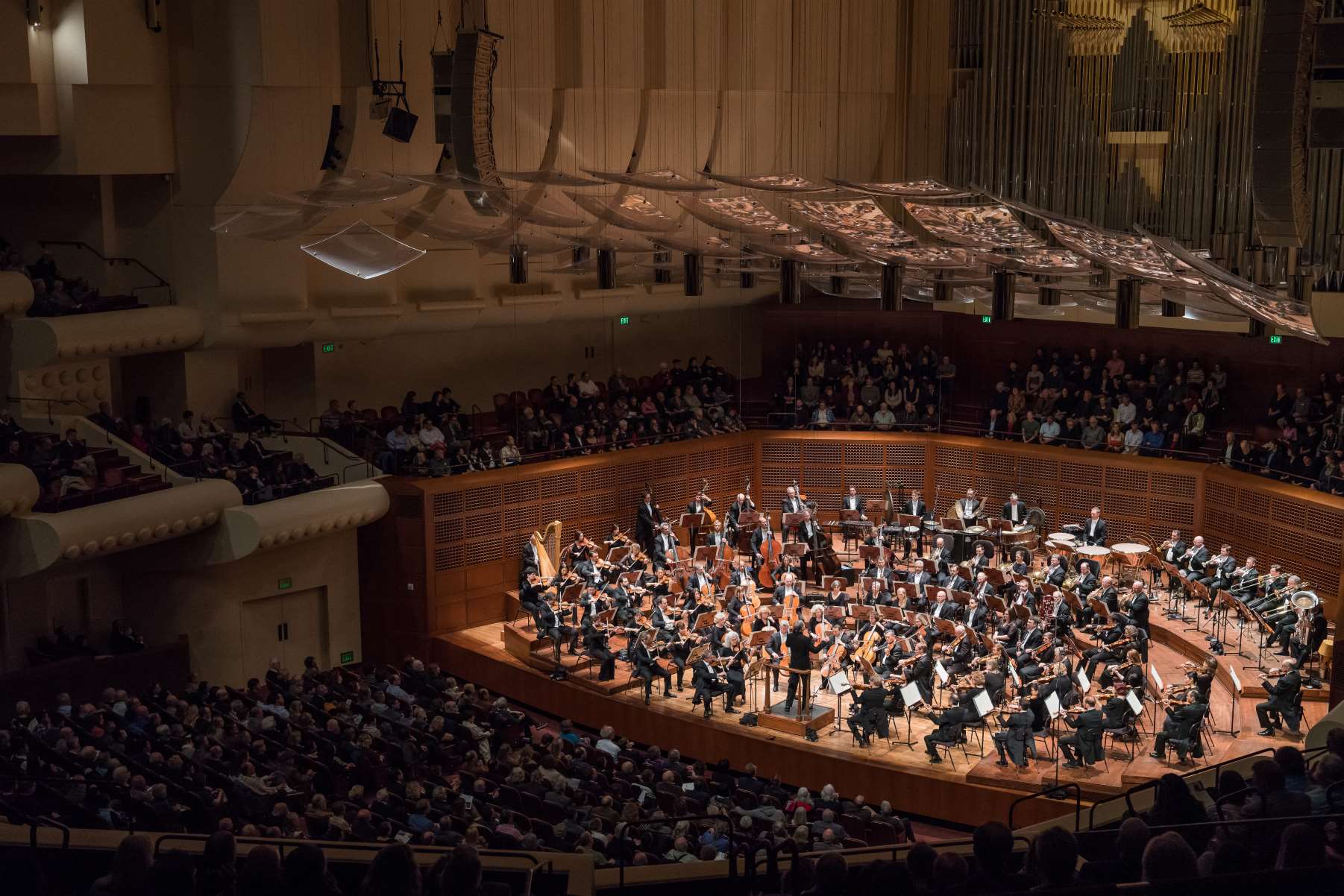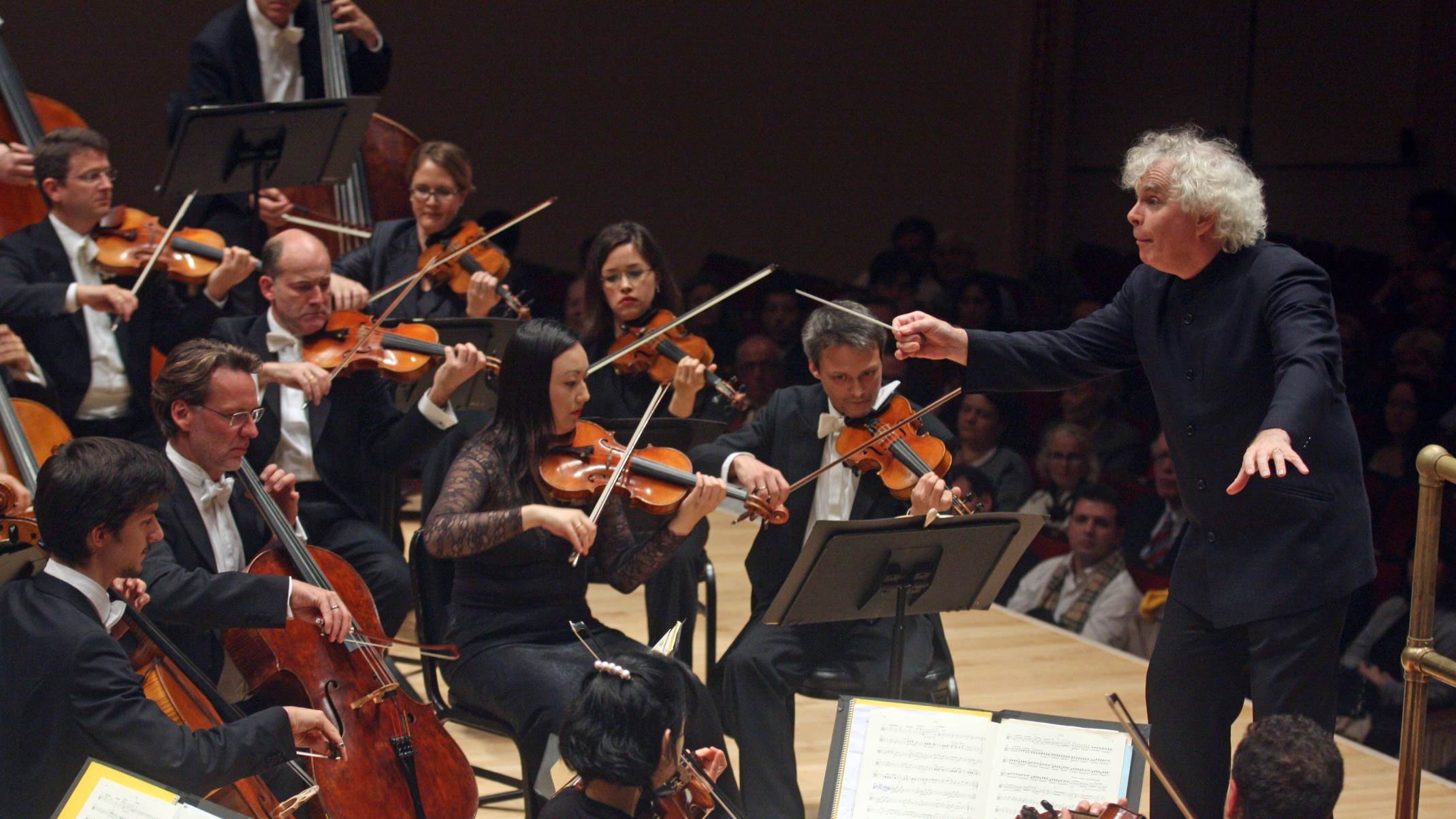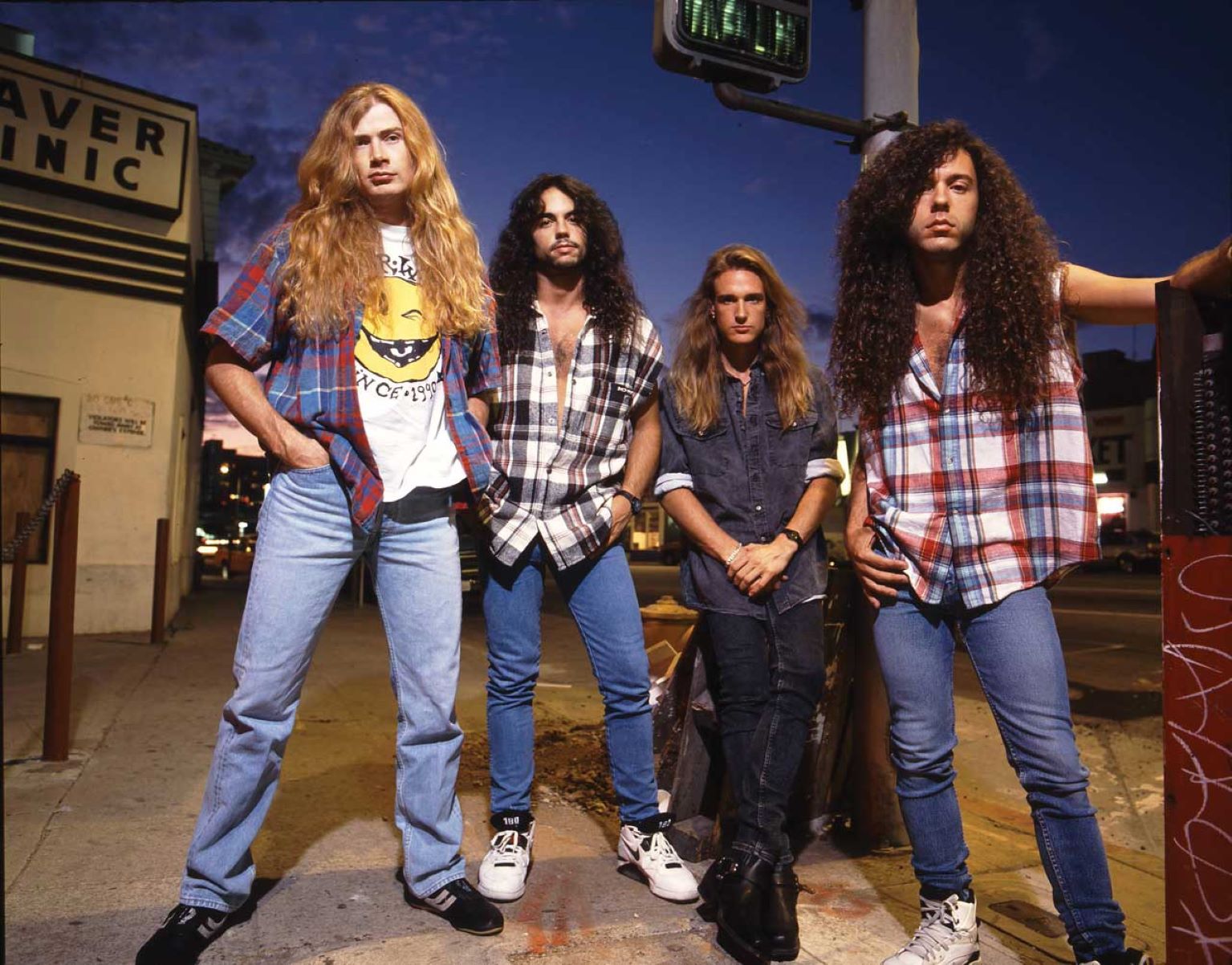

Symphony
How Many Instruments In A Symphony
Modified: February 24, 2024
Discover the answer to "How many instruments in a symphony?" Explore the fascinating world of symphonies and learn about the diverse range of instruments that contribute to their enchanting sound.
(Many of the links in this article redirect to a specific reviewed product. Your purchase of these products through affiliate links helps to generate commission for AudioLover.com, at no extra cost. Learn more)
Table of Contents
Introduction
When we think of a symphony, we often envision a grand orchestra with many different instruments coming together to create a harmonious and powerful sound. But have you ever wondered how many instruments are actually part of a symphony? In this article, we will explore the fascinating world of symphonies and dive into the variety of instruments that contribute to their rich and complex sound.
A symphony is a large-scale composition for orchestra, typically consisting of multiple movements. It is considered one of the most important and complex forms of classical music. The term “symphony” is derived from the Greek word “symphonia,” meaning “agreement of sound.”
In a symphony, instruments are grouped into different sections based on their characteristics and the type of sound they produce. Each section plays a unique role in contributing to the overall texture and dynamics of the composition.
The number of instruments in a symphony can vary depending on the composition and the composer’s vision. While there is no fixed rule, symphonies typically involve a large ensemble of musicians. Historically, symphonies were composed for a full orchestra consisting of four main sections: strings, woodwinds, brass, and percussion.
Throughout history, the size and instrumentation of symphony orchestras have evolved. Some symphonies may also include additional instruments or sections to enhance the musical experience and add depth to the composition. The diversity of instruments used in a symphony allows for a wide range of tonal colors and dynamic contrasts.
In the following sections, we will delve into each of these instrument sections and explore their unique contributions to the symphony orchestra. From the delicate melodies of the strings to the powerful brass fanfares and rhythmic beats of the percussion, each instrument plays a crucial role in bringing the symphonic experience to life.
Definition of a Symphony
A symphony is a musical composition that is typically written for a full orchestra consisting of various instruments. It is a complex and multi-movement work that is considered one of the most significant forms of classical music. The term “symphony” has its roots in the Greek word “symphonia,” which means “agreement of sound.”
Symphonies are characterized by their large-scale structure and the use of multiple movements. A movement is a self-contained section of a symphony with its own tempo, mood, and musical themes. Most symphonies consist of three to four movements, each with a distinct musical character that contributes to the overall narrative of the composition.
Traditionally, symphonies are written for a symphony orchestra, which is composed of four main instrument sections: strings, woodwinds, brass, and percussion. The strings section, comprised of violins, violas, cellos, and double basses, forms the foundation of the ensemble and provides the rich and melodic core of the symphony’s sound.
The woodwind section includes instruments such as flutes, oboes, clarinets, and bassoons, which bring their unique timbres and expressive qualities to the orchestration. Brass instruments like trumpets, trombones, and French horns add a powerful and majestic element to the symphony, while the percussion section, including drums, cymbals, and timpani, provides rhythmic drive and accentuation.
The symphony, as a musical form, has its roots in the Classical period of the 18th century, with composers such as Haydn and Mozart being instrumental in its development. However, the genre continued to evolve throughout the Romantic era and into the 20th century, with composers like Beethoven, Mahler, and Shostakovich expanding the symphony’s scope and pushing its boundaries.
Today, symphonies continue to be written and performed by orchestras around the world. They serve as a platform for composers to express their musical ideas on a grand scale and provide audiences with immersive and transformative musical experiences. Whether it’s the soaring melodies, dramatic dynamics, or intricate harmonies, the symphony is a testament to the power of orchestral music and its ability to move and inspire listeners.
The Role of Instruments in a Symphony
Each instrument in a symphony plays a crucial role in shaping the overall sound and texture of the composition. The combination of different instruments from the various sections of the orchestra creates a rich and complex musical tapestry. Let’s explore the roles of the different instrument sections in a symphony:
- String Section: The string section forms the backbone of the symphony orchestra. Composed of violins, violas, cellos, and double basses, the strings provide melodic and harmonic support, creating a lush and vibrant sound. They often play the main themes and carry the emotional weight of the composition. The strings can produce a wide range of timbres, from delicate and lyrical to powerful and dramatic, adding depth and expression to the symphony.
- Woodwind Section: The woodwind section consists of instruments such as flutes, oboes, clarinets, and bassoons. This section adds color, texture, and expressive qualities to the symphony. The flutes can evoke a sense of lightness and airiness, while the oboes and clarinets bring warmth and richness to the sound. The bassoons add a deep and resonant quality. Woodwinds often play solos, duets, or ensemble passages, contributing to the melodic and thematic development of the symphony.
- Brass Section: The brass section, including trumpets, trombones, French horns, and tubas, brings power, brilliance, and grandeur to the symphony. They often play majestic fanfares, triumphant melodies, and heroic passages. The brass instruments can create a wide dynamic range, from soft and delicate to bold and thunderous. Their resonant sound adds a sense of grandiosity and impact to climactic moments in the symphony.
- Percussion Section: The percussion section provides rhythmic drive, color, and accents to the symphony. Instruments such as timpani, snare drums, cymbals, and xylophone add texture and energy. The percussionists create rhythmic patterns, highlight climactic moments, and add dramatic impact to the composition. They can evoke a variety of moods, from subtle and delicate to loud and explosive, enhancing the overall dynamics and intensity of the symphony.
In addition to these main sections, symphonies may also feature other instruments to add further depth and variety to the composition. These additional instruments can include harps, pianos, and various types of auxiliary percussion instruments.
Overall, the combination of instruments in a symphony orchestra allows composers to create a diverse range of sounds, textures, and emotions. The interplay between the sections and the skillful orchestration of the instruments contribute to the cohesive and immersive musical experience that symphonies offer to listeners.
String Section
The string section is a crucial component of a symphony orchestra, providing the foundation of the ensemble’s sound. Comprised of violins, violas, cellos, and double basses, the strings play an essential role in shaping the melodic, harmonic, and rhythmic elements of a symphony.
The violins, typically divided into first and second sections, carry the primary melodic lines and often perform intricate and virtuosic passages. Their bright and expressive sound adds brilliance and emotion to the overall composition. The violas, slightly larger than the violins, have a warmer and richer tone. They often support the violins with harmonies, add depth to the sound, and occasionally take on solo passages.
The cellos, with their rich and resonant sound, provide a melodic and expressive voice in the symphony. They often play countermelodies, harmonies, and provide a lower register foundation to the overall sound. The double basses, being the lowest-pitched instruments in the string section, contribute depth, stability, and a powerful bass line to the composition.
Strings are capable of producing a remarkable range of emotions, from delicate and tender melodies to powerful and dramatic passages. The technique of the string players allows for a wide array of expressive techniques, such as vibrato, bow speed, and dynamics, further enriching the musical experience.
In a symphony, the string section often plays a significant role in the development and presentation of musical themes. They frequently introduce and develop melodies, engage in dialogues with other sections, and create intricate harmonies and textures. The string section is known for its versatility, seamlessly transitioning from lyrical and intimate passages to bold and energetic flourishes.
Composers have taken advantage of the expressive potential of the strings in their symphonies throughout history. The works of renowned composers such as Mozart, Beethoven, Tchaikovsky, and Mahler showcase the immense power and emotional depth that can be achieved by utilizing the string section.
Whether it’s the soaring melodies of the violins, the warm harmonies of the violas, the emotive voice of the cellos, or the resonant foundation of the double basses, the string section is integral to the emotional impact and musical journey of a symphony.
Woodwind Section
The woodwind section is a vital component of a symphony orchestra, adding color, texture, and expressive qualities to the overall sound. Comprised of instruments such as flutes, oboes, clarinets, and bassoons, the woodwinds contribute melodic lines, harmonic support, and delicate embellishments.
The flute, known for its bright and agile sound, is capable of producing a wide range of tones. It can create a sense of lightness and airiness, evoking delicate and ethereal melodies. The flute often takes on solo passages, playing lyrical and virtuosic lines that soar above the orchestra.
The oboe has a distinct and haunting timbre, capable of expressing a wide range of emotions. Its expressive qualities make it suitable for melodic lines that are often lyrical and soulful. The oboe also plays an essential role in tuning the orchestra, serving as a reference for other instruments.
The clarinet, with its warm and versatile sound, is known for its expressive capabilities. It can perform delicate and expressive melodies, as well as agile and virtuosic passages. The clarinet often plays a variety of roles in a symphony, from supporting the strings to taking on solo and ensemble passages.
The bassoon, known for its rich and dark timbre, adds depth and resonance to the woodwind section. Its capable of performing melodic lines, providing harmonic support, and playing rhythmic and virtuosic passages. The bassoon is often used to create a sense of mystery, humor, or solemnity within a symphony.
The woodwind section, as a whole, brings a wide range of expressive capabilities to a symphony. Their ability to produce various articulations, dynamics, and timbres allows composers to create intricate and nuanced passages. Additionally, the woodwinds frequently engage in dialogues with other sections of the orchestra, adding complexity and depth to the musical texture.
Composers have utilized the woodwind section in numerous ways throughout the history of symphonic composition. From the delicate and intricate woodwind solos in Mozart’s symphonies to the powerful and evocative woodwind passages in Mahler’s works, the woodwinds offer a palette of colors and emotions that enhance the overall symphonic experience.
The woodwind section brings a unique character and expressive quality to the symphony orchestra. Whether it’s the soaring melodies of the flute, the haunting tunes of the oboe, the versatile sound of the clarinet, or the resonant voice of the bassoon, the woodwinds add depth, emotion, and a touch of magic to a symphony.
Brass Section
The brass section is a powerful and majestic component of a symphony orchestra, adding brilliance, grandeur, and impact to the overall sound. Consisting of instruments such as trumpets, trombones, French horns, and tubas, the brass section brings a commanding presence and a wide range of tonal colors to the symphony.
The trumpets, known for their bright and penetrating sound, are often associated with fanfares, heroic melodies, and triumphant passages. They bring a sense of excitement, energy, and celebration to the symphony. Trumpets are capable of playing virtuosic and agile passages that cut through the orchestral texture with their piercing tones.
The trombones, with their deep and resonant sound, provide a rich and robust foundation to the brass section. They often play powerful and noble melodies, epic chorales, and intense climactic passages. The trombones add weight and depth to the orchestration, creating a sense of grandeur and majesty.
The French horns have a warm and expressive timbre, capable of producing a wide range of tones and moods. They add a sense of depth, richness, and lyricism to the symphony. The French horns often play melodic lines, harmonies, and provide a sense of depth and color through their unique timbral qualities.
The tuba, the largest and lowest-pitched instrument in the brass section, adds a deep and resonant bass line to the symphony. It provides a foundation of power and stability, enhancing the overall impact and weight of the orchestration.
The brass section, with its ability to produce a wide range of dynamics, from soft and mellow to powerful and commanding, brings a sense of drama and intensity to the symphony. It often plays a crucial role in highlighting climactic moments, adding emphasis and impact to the composition.
Composers have utilized the brass section in various ways throughout the history of symphonic composition. From the triumphant and heroic brass fanfares in Beethoven’s symphonies to the lush and sweeping brass melodies in Tchaikovsky’s works, the brass section adds a sense of grandiosity and emotion to the symphony.
Whether it’s the triumphant trumpets, the resonant trombones, the expressive French horns, or the grounding bass of the tuba, the brass section brings power, brilliance, and an element of awe to the symphony orchestra. It elevates the emotional impact and leaves a lasting impression on the audience.
Percussion Section
The percussion section is a dynamic and essential component of a symphony orchestra, adding rhythmic drive, accents, and color to the overall sound. Comprised of various instruments such as timpani, snare drums, cymbals, and xylophone, the percussion section creates a vibrant and energetic presence within the symphony.
The timpani, also known as kettle drums, are the most prominent percussive instrument in the orchestra. They provide a solid rhythmic foundation and add a sense of pulse and intensity to the composition. The timpani can create a wide range of tones, from deep and resonant to sharp and piercing, enhancing the rhythmic complexity and impact of the symphony.
The snare drum adds a crisp and distinctive sound to the symphony. It provides rhythmic accents and creates a sense of excitement and anticipation. The snare drum can imitate military marches, evoke a sense of tension, or add dramatic effects to the composition.
Cymbals, often played in pairs, contribute to the symphony with their shimmering and crashing sounds. They provide accents and create dramatic effects, ranging from delicate taps to explosive crashes. The cymbals can add a sense of power, intensity, and climactic impact to the symphony.
The xylophone, with its bright and resonant sound, adds a playful and melodic element to the percussion section. It often performs rapid, virtuosic passages that cut through the orchestration. The xylophone can create a sense of sparkle, whimsy, and joy in the symphony.
Other instruments in the percussion section, such as bass drums, triangle, tambourine, and glockenspiel, add further texture and variety to the symphony. They provide specific timbres, distinctive rhythms, and unique effects that enrich the overall symphonic experience.
The percussion section is known for its ability to create rhythmic complexity, add accents, and create a sense of excitement and energy in the symphony. It often engages in dialogues with other sections of the orchestra, syncopating rhythms, and enhancing the overall groove of the composition.
Composers throughout history have creatively utilized the percussion section to enhance the storytelling and emotional impact of their symphonies. From the thunderous rolls of the timpani in Beethoven’s symphonies to the delicate and mysterious triangle in Stravinsky’s works, the percussion section adds depth, energy, and color to the symphony.
Whether it’s the driving rhythms of the timpani, the crisp accents of the snare drum, the shimmering crashes of the cymbals, or the playful melodies of the xylophone, the percussion section brings excitement, texture, and a rhythmic pulse to the symphony orchestra.
Other Instruments in a Symphony
In addition to the core sections of strings, woodwinds, brass, and percussion, symphonies may also incorporate other instruments to further enhance the overall musical experience. These additional instruments bring unique colors, textures, and tonal qualities to the orchestration, expanding the sonic palette of the symphony.
One common instrument often featured in symphonies is the harp. The harp adds a touch of ethereal beauty and delicacy to the composition. Its arpeggios, glissandos, and lush chords create a sense of magic and elegance, enhancing the emotional impact of the music.
Another instrument that may be included is the piano. The piano can provide a rich harmonic foundation, perform virtuosic solo passages, or add rhythmic elements to the symphony. Its versatility allows for a wide range of musical possibilities and dynamic contrasts.
Various auxiliary percussion instruments, such as the triangle, tambourine, and marimba, may also make appearances in a symphony. These instruments add specific colors, accents, and textures to the composition. They contribute to the rhythmic complexity and provide unique timbral qualities that enhance the overall sound.
Some symphonies may call for specific instruments or instrument combinations based on the composer’s vision. This could include instruments like the organ, saxophone, or even non-traditional instruments, such as electronic synthesizers or non-western instruments. The inclusion of such instruments adds diversity and expands the sonic possibilities of the symphony, creating unique and innovative sounds.
The use of other instruments in a symphony allows composers to explore new textures, tonal colors, and creative possibilities in their compositions. It adds depth, variety, and an element of surprise to the overall orchestration, facilitating the emotive journey and musical storytelling of the symphony.
While the strings, woodwinds, brass, and percussion sections form the core of the symphony orchestra, the inclusion of other instruments creates a kaleidoscope of sonic possibilities. The symphony becomes a platform for unleashing the full potential of orchestration, blending diverse timbres and creating a rich tapestry of sound.
Conclusion
Symphonies are magnificent compositions that showcase the full range of orchestral instruments, bringing together the strings, woodwinds, brass, percussion, and occasionally other instruments to create a symphonic masterpiece. Each instrument section contributes its unique voice and characteristics, playing a crucial role in shaping the symphony’s overall sound and emotional impact.
The string section forms the foundation, providing melodic and harmonic support with their lush and expressive tones. The woodwind section adds color, texture, and intricate melodies, while the brass section brings grandeur, power, and brilliance to the symphony. The percussion section adds rhythm, accents, and energy, driving the composition forward and providing dramatic impact. The inclusion of other instruments further enhances the symphony’s sonic palette, adding depth, variety, and unique timbres to the overall orchestration.
Symphonies have captivated audiences for centuries, evolving and pushing boundaries of composition and orchestration. From the classical symphonies of Mozart and Haydn to the groundbreaking works of Beethoven, Mahler, and beyond, these compositions stand as shining examples of the potential and power of orchestral music.
Through the symphony, composers tell stories, evoke emotions, and transport listeners on a musical journey. The interplay of instruments and sections, the merging of melodies, harmonies, and rhythms, create a rich and immersive experience that captures the imagination and stirs the soul.
As listeners, we have the privilege of being swept away by the symphony’s intricate tapestry of sound. From the delicate melodies to the thunderous climaxes, every instrument comes together harmoniously to create a symphony greater than the sum of its parts.
So, the next time you sit in a concert hall or listen to a symphony, take a moment to appreciate the incredible diversity and masterful orchestration at play. Allow yourself to be enveloped in the emotive power of the strings, the lyrical beauty of the woodwinds, the majestic fanfares of the brass, and the driving rhythms of the percussion. Let the symphony transport you to new realms and leave you feeling inspired, uplifted, and in awe of the vast potential of orchestral music.

